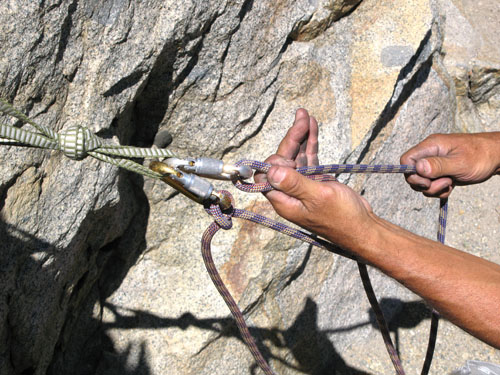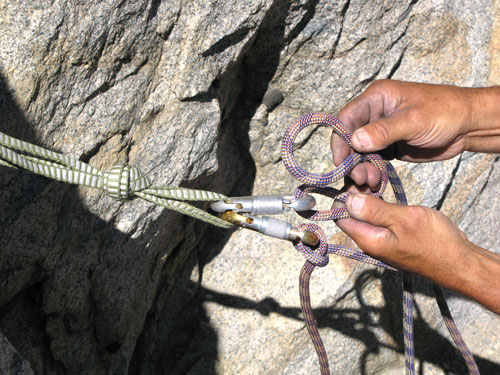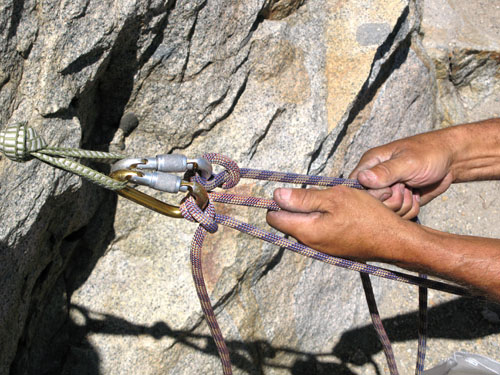TECH TIP: Get Hitched! - Münter/Clove Hitch Part 2
Belaying the second with a Münter Hitch
By: Bela G. Vadasz
We have learned the tremendous advantage of arriving at the belay stance, recognizing a well-equalized anchor system with a strong, fortified master point, then using a clove hitch to anchor yourself. The clove hitch is quick and easy to adjust, using the climbing rope to anchor and not needing an additional, one-use item such as a daisy chain. (See Part 1)
Next is the excellent technique of belay directly off a strong anchor with a Münter Hitch. The Münter Hitch, aka: italian hitch or HMS knot (translates to half-rope break) is essentially a half clove hitch that is very easy to take in and let rope out. It's value in a climbing system is often overlooked because it is just too simple!
By belaying directly off the anchor from an equalized master point, preferrably from a higher placed anchor, it's very easy to employ the locking brake by bringing the two strands of rope together rather than apart as with a conventional belay device. This usually produces a comfortable and restful belay position making it easy to bring rope in or lower a climber out under tension if necessary.
A common method among recreational climbers is to redirect the belay strand from the climber through the top piece of their anchor, then back down to their belay device off their harness. To many, this seems like a good idea, but if you think about it, you are putting twice the weight of the climber you are holding (2:1 mechanical disadvantage!). If you are holding a 200 lb. fall on the climber's side, you have to generate an additional 200 lbs. of resistance on the brake side of the redirect. You have now put 400 lbs. (minus friction and possible dynamic movement) all on a single piece of the anchor system. Hope it's a really good piece!
It makes so much more sense to equalize 2 or 3 pieces to a master point that is sharing the load, then only putting half the weight (200 lbs) on the shared anchor.



When the second arrives at the belay stance, it's quick and easy to turn their Münter Hitch into a clove hitch and both climbers are secure while you change gear over and get ready for the lead lead.
Belaying off the anchor with a Münter Hitch is intended only for belaying the second up to the anchor. Be sure and use a symetrical pear-shaped locking carabiner that allows you to "pop" the knot through to change rope directions. Don't forget to lock the carabiner! To belay the leader, place a bite of rope through your belay device and belay traditionally off your harness. This puts dynamic absorption into the system in the event of a leader fall.
Rope twist
Some have tried the Münter Hitch in different applications and have gotten frustrated, complaining that it twists the rope too much. Usually, that occurs from belaying off the harness with the redirect or during rappelling and lowering. No twist tips:
Try coiling your rope with lap coils from the center, it relaxes the rope and lets the twists work off the ends. When you lower a climber with the Münter, try to keep the brake strand out at 90° rather than parallel. This sees to reduce twisting.

Caution: It is recommended to practice these techniques under the coaching and supervision of a qualified instructor. ASI makes no guarantees regarding the use of techniques illustrated or recommended on this website with regard to insuring personal safety or preventing injury or death.
|